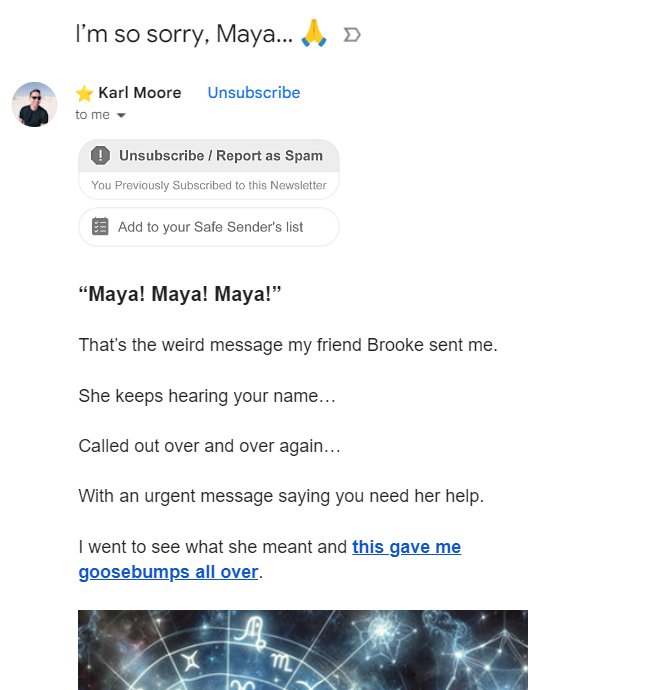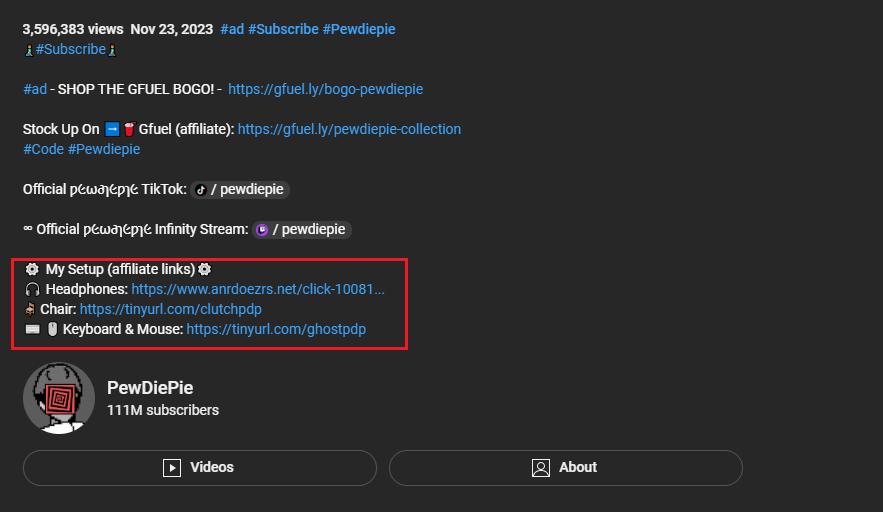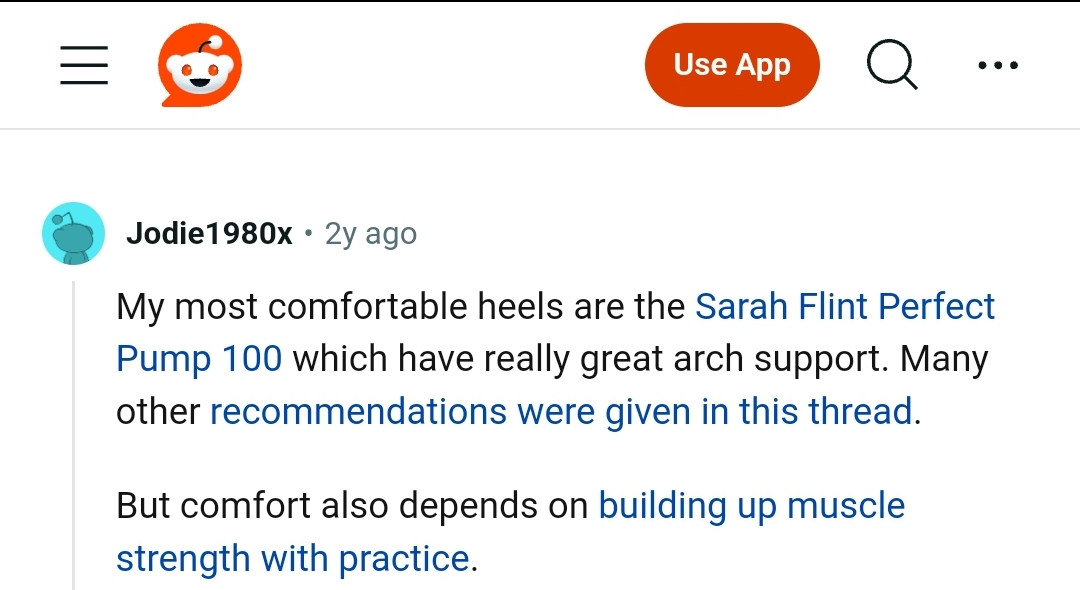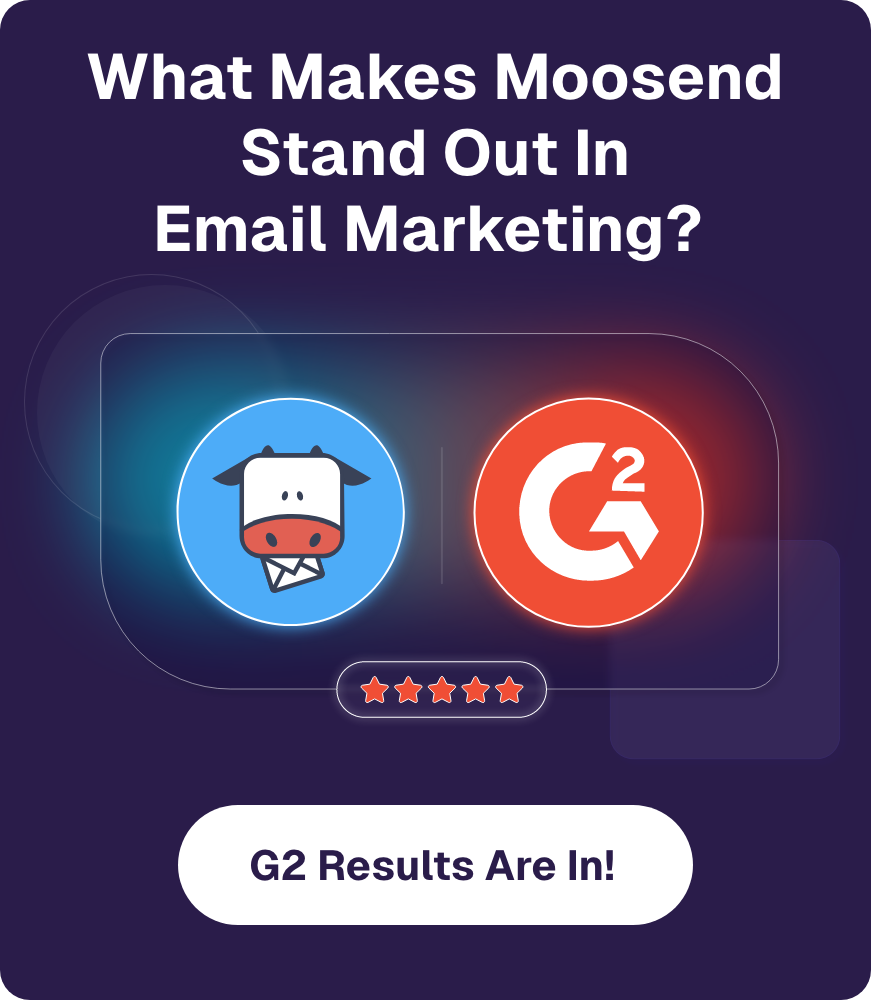
How to Promote Affiliate Links: 10 Must-Try Methods [2025]
Getting started with affiliate marketing is the best way to earn a passive income effortlessly.
However, while some nail it with affiliate links, others struggle. The question is, how can you join the successful group?
In this guide, we’ll see how to promote affiliate links to drive traffic to your content, stand out from competitors, and address the legal and ethical aspects of affiliate marketing.
1. Integrate Affiliate Links into Your Blog Posts
Joining an affiliate marketing program is easy. But how do you share affiliate links in your blog posts naturally?
More importantly, how do you write blog posts people like and convert through?
Regardless of your niche, the purpose of a blog post is to inform and engage your audience by providing relevant and quality content on a specific topic.
So, whether you have experience or you’re a beginner blogger, you want your posts to be fresh, helpful, actionable, and, if relevant, entertaining.
Try different ways to enrich your content, including:
- Tutorials and how-to guides
- Round-ups
- Product reviews
- Comparison articles
- Listicles
Whatever your topic, tailor your content for readers and search engines to ensure higher engagement and rankings. Using search engine optimization (SEO) means:
- Improved visibility and more organic traffic
- Targeted audience reach
- Higher ranking
- More conversions
Include affiliate links in your content, but don’t overdo it. A good rule of thumb is to embed no more than three links per post.
Use attention-grabbing phrases like “check out this [product type]” or “see/find out more” to spark curiosity and encourage clicks, or just use the product name as an anchor for your link, as shown below.

Authenticity and honesty matter
When you genuinely endorse products you use and enjoy, your audience will be able to tell, and they will appreciate your recommendation.
On that note, transparency matters, too.
Be clear and honest. Let your audience know you’re an affiliate for a brand and earn an affiliate commission when they buy through your link.
2. Incorporate Affiliate Links in Your Email Campaigns
Generating income from affiliate offers through blog posts requires time for the content to drive traffic organically. Emails with links, on the other hand, can directly lead to conversions.
Affiliate sales through email marketing tools are easy. For example, you can send specific referrals to different targeted segments of your audience based on their needs or preferences.
However, just like with blog posts or any other marketing strategy, for your readers to open your emails, you need to write high-quality content.
Also, you will need to regularly clean your list of inactive users to maintain good email deliverability and prevent your emails from landing in spam folders. For the same reason, stuffing your emails with affiliate links is not a good idea.
Here’s a great example by Karl Moore:

Before you use email marketing to promote your affiliate links, it’s good to know that many email service providers (ESPs) have certain restrictions in place.
For example, most platforms prohibit affiliate marketing as an industry; however, they will allow affiliate links but not from denylisted URLs.
Some services will ask questions, such as “Which companies are involved?” and “Which method do you use to collect email addresses?” before they grant you access to their platform.
In case you don’t comply, your account will be suspended and you’ll get blocklisted.
Before you proceed, it’s best to reach out to your email tool and request more information regarding their affiliate link policy.
If you want to minimize the risk of having your account suspended, you can use email marketing to direct your subscribers to pages featuring your affiliate links. For example, you can create a highly personalized campaign and add a CTA to send your subscribers to a landing page featuring the promoted product.
Tips for effective email marketing
Here are a few useful tips to consider when using your newsletter for affiliate marketing:
- Create convincing subject lines: Depending on your industry, the open rate can range between 18.9% and 30.62%. A captivating subject line will ensure your email gets opened.
- Create effective CTAs: Use compelling language, attention-grabbing design elements, and bright colors to make them stand out.
- Choose the right email marketing platform: Choose email marketing software based on your needs. Ensure it enables autoresponders and automation and tracks key metrics.
Moosend will allow you to promote your affiliate links after your account goes through a review. If you comply, then you’re good to go. Remember, transparency is key.
Moreover, the email platform will provide you with all the tools you need, such as email personalization, segmentation, autoresponders, RSS feeds, forms, and landing pages, to increase your affiliate link exposure effortlessly.
3. Use Paid Advertising Channels
Organic affiliate marketing via your blog or email list has a few drawbacks:
- It takes time for your content to rank
- You need to build an email list
- Email platforms will need to review your links
This will result in delaying your potential earnings, so one solution is to use paid advertising. If you pay to run ads, many people will find your content and affiliate links quickly.
But there’s a catch, especially if you’re new to affiliate marketing. You need to be extremely careful when setting them up to ensure their cost doesn’t exceed your payouts, otherwise you will be operating at a loss.
There are a few steps you should follow when setting up paid ads to ensure they’re profitable.
- Select the optimal advertising platform: Determine if Google Ads or ads on platforms like Facebook or LinkedIn are best for your audience.
- Use precise targeting: Google and Bing target search queries; Facebook and Instagram focus on interests and demographics.
- Set the right budget and bidding options: The budget determines ad visibility, cost, and effectiveness, so ensure you optimize for maximum impact.
For instance, with PPC ads (Pay-Per-Click), you pay for each click, while with CPM (Cost Per Mille), you pay for every thousand impressions, regardless of clicks.
By understanding these dynamics, you can enhance the overall effectiveness of your campaign. Keep in mind that it’s crucial to adhere to advertising guidelines and even consider seeking expert advice if needed.
4. Add Links in the Descriptions of Your Video Content
With a staggering 3.37 billion internet users consuming video content and a notable 24% surge in traffic, the message is clear: leveraging video in content marketing is essential for effective affiliate promotion.
You can create videos for YouTube, TikTok, or Instagram. Then you can either make a video focused on your promotion—a tutorial, review, or comparison, or mention products while discussing another topic, and add affiliate links in the description.
Here are some of the best practices when including your affiliate links in your video descriptions:
- Describe why you’re recommending your product: Add informative descriptions to explain why you recommend the product or service. This will help your viewers understand their value.
- Avoid excessive praise or salesy language: Use an informative tone to encourage viewers to explore recommended products at their own pace.
- Use your personal experience: Share how the product or service helped you solve problems.
- Include a disclaimer: Disclose your use of affiliate links in the video description to maintain transparency and build trust and credibility.
- Strategically place your links: Consider positioning them near the top of your description for visibility and easy access.
- Shorten your link URLs: Consider using shortened, transparent URLs for affiliate links to enhance visual appeal and manageability.
Here’s an example by YouTuber Pewdiepie:

Ultimately, ensure you monitor and update links to keep them current, as products and promotions may change over time.
If you need more best practices, check out our comprehensive affiliate marketing guide.
5. Insert Affiliate Links in Your Podcast Episodes
Podcasts have gained significant traction in online digital marketing recently, attracting over 500 million listeners worldwide.
This opens opportunities for marketers to engage with their target audience, join the best affiliate networks, and earn extra income.
Podcast episodes, let you explore the product recommendation in-depth, making your referral valuable for your listeners.
There are two main ways to recommend your affiliate links to your podcast audience:
- Add your affiliate links in episode descriptions
- Plug your links into the podcast episodes
For the first one, simply add the affiliate links to the notes or descriptions of your podcast episodes.
Also, don’t forget to mention that affiliate links are available for those interested in purchases in the show notes.
The second method is more proactive. It involves discussing and endorsing affiliate products or services within your podcast episode and actively encouraging your listeners to visit your description or show notes where they can find the links provided.
You can apply the same strategy for webinars. Mention the tools or products you recommend and share the link in the chat or the recording description, just like with YouTube videos.
Lastly, ensure you follow your podcast or webinar platform’s rules on affiliate links and use the same best practices described for including your affiliate links in video descriptions.
6. Share Your Links with Your Social Media Followers
The key to promoting your links on social media platforms is to balance your content and sales copy.
In a nutshell, if your content helps or entertains your audience, they’ll find it valuable and engage with it. Those interactions help build trust, paving the way for you to recommend your favorite products to them.
Building a solid social media marketing strategy is how you become an influencer. Then, you can promote your offers on any social platform, like Facebook, LinkedIn, TikTok, or wherever you have a following.
How to place affiliate links on social media platforms
There are various ways to place your links in social media content.
On Facebook, for example, you can insert them directly in the social media post caption.
On Instagram and TikTok, links in the caption don’t work. Instead, you can use your bio to add a special landing page with all your links. For example, it could be your website or a free Linktree page.
Another choice is sharing affiliate links on your Facebook page or in niche Facebook groups.
Just be mindful of Facebook’s affiliate policy and other social media platform rules.
7. Leverage Live Shopping Features on Various Platforms
The eCommerce growth trend will continue, reaching 9.4% in growth worldwide and crossing the $6 trillion mark in sales. So, if you’re considering selling affiliate products, the best time to start is now.
One way to do it is by using live shopping, a rising trend in the eCommerce industry worth considering for promoting your products. It heavily leans on the see-now-want-now mindset, swiftly transforming the online retail landscape.
This approach works because it lets you showcase your offers in real-time while guiding viewers through their decision-making process. Here’s an example from TikTok:

All you need to do is choose the best interactive streaming feed platform to promote your affiliate offers.
Here are some of the most popular ones and their key features:
| Live shopping platform | Main benefits |
| TikTok Shop | TikTok Shop academy High virality Integration with eCommerce shops like Shopify and WooCommerce Live shopping feature support |
| Amazon Shop | Immediate sales conversions On-the-spot purchase choices Shoppable links Real-time interaction with potential customers Follow feature |
| Channelize.io | In-show Products Promotion Live Shop page for your store Add-to-Cart feature Production Dashboard Live Chat moderation Real-time Products Update Multistreaming Email integration |
8. Weave Affiliate Links into the Content of Your Online Courses
Another smart way to add value and make money from affiliate partnerships is to share affiliate links through an online course.
As a course creator, you want your audience to apply what you teach, act, and get results. Demonstrating the products you use should make it easy for them to start using them, too.
The fact that you sold your course shows that your students trust you and want to learn from you. If you suggest a helpful tool or product, they’ll more likely buy it.
You can include relevant affiliate links in:
- Course video descriptions
- Course materials like workbooks, cheat sheets, checklists, etc.
- Additional resource pages
- Bonus materials (showcase the discount they get when purchasing from your link)
Tips when using affiliate links in your course content
Avoid overwhelming your audience with too many links. This can appear spammy and lead to reduced clicks and sales. Use them sparingly, ensuring relevance and added value to the course materials.
Also, be open about using affiliate links. Always include a disclaimer in any situation involving affiliate links.
Lastly, high-quality courses lead to better conversion rates. Focus on both key lessons and production quality, ensuring your content is up to date.
9. Generate QR Codes Linked to Your Affiliate Products
Using a QR code with an affiliate link is an easy way to take people to your partner’s website or product page.
Depending on the products you’re promoting, you can use the QR codes in numerous ways, online and offline. Here are a few:
- Offline: Print marketing materials, coffee mugs, business cards, posters, T-shirts, bookmarks, books, etc.
- Online: Your website, social media profiles, eBooks, giveaways, blog, visuals, videos, etc.
How to set up QR codes
Setting up affiliate QR codes is remarkably simple. Here’s a simple guide to follow:
- Create your Affiliate Link
- Generate a QR Code: Find and use an online generator for your affiliate link that fits your needs, such as My QR Code.
- Input the Affiliate Link: Ensure the URL is correct and directs to the right landing page.
- Get the QR Code: After creating the QR code, save it, typically as a PNG or JPEG file.
- Test your code: Ensure it redirects your potential customers correctly using your phone.
Always check and follow your affiliate program’s terms and conditions and be transparent with your audience about your activities.
Moreover, you can choose a QR code generator that supports dynamic codes for tracking and editing, unlike static codes. Also, pick tools that allow you to follow the metrics to help you improve your campaigns further down the line.
10. Engage in Relevant Forums and Communities
Communities and forums, such as Reddit and Quora, and niche ones like Warrior Forum, connect like-minded people with similar interests, providing a space for discussions, sharing tips, and solving problems.
To successfully share your affiliate links there, it would be best first to build trust with the community or forum members. Once you’ve achieved that, you can add links to your blog content and product suggestions.
Here are several strategies to foster positive relationships with your community or forum peers:
- Focus on answering questions about the products or services you support
- Share and discuss relevant content
- Interact with people
- Ask questions
- Give helpful tips and explanations
Here’s an example from Reddit:

Remember, not all forum administrators allow affiliate links. Make sure you read the rules and policies beforehand.
Moreover, when you share affiliate links on other websites, you might not have much control over them. The platform owner could take down the link after a while.
But if that’s not the case and the topic is popular, your old forum and community replies can stay lucrative for a long time.
Tip: if you pick this method for affiliate marketing, stay updated on community trends for timely promotions that you could take part in.
Choosing the Best Way to Promote Your Affiliate Links
From adding links to your blog posts to using your YouTube channel, there’s a variety of ways to show your audience your affiliated products or services and make a passive income.
Depending on your skills and expertise, you can select the tactic that suits you the most or combine them for better results.
For instance, if you have a blog and an email list, you can add links to your posts and use your email platform to create dedicated campaigns for them.
If promoting your links through email sounds like something you’d be interested in, but you haven’t already found an affordable platform to do so, you can try Moosend by creating a free account and start sharing your links with your email list today!






 Published by
Published by